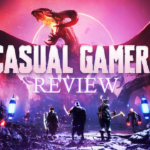Hey, everyone! Welcome to my casual review of Marvel’s Spider-Man: Miles Morales, released for the PlayStation 5 about four and a half years ago. I’m finally catching up and played it now.
I played this game on the standard PS5, and the footage reflects that. It’s absolutely gorgeous and runs incredibly smoothly, proving the PS5 Pro isn’t necessary, the regular PS5 still shines, even with this nearly five-year-old title. With that said, let’s dive in! I’ll answer whether it’s worth paying full price, spoiler-free.
Storyline: I strongly recommend playing the first Spider-Man game since this is a direct continuation. Though the first game occasionally felt repetitive, it was overall an enjoyable experience. Assuming you’ve played it, this sequel kicks off with Miles Morales, our new protagonist, stepping off the subway.
Right away, the game impresses—not just with stunning graphics but with the DualSense controller on the PS5. It’s hard to describe, but the haptic feedback adds a whole new dimension, like feeling vibrations move across the controller when Miles encounters a passing bus.
Miles is immediately contacted by Peter Parker, the original Spider-Man, to assist with transporting Rhino, a supervillain under high security. Predictably, chaos ensues, and Miles makes some rookie mistakes. Peter reassures him, sharing his own experience as Spider-Man over the past eight years. Then, Peter heads abroad, leaving Miles as the sole Spider-Man in his absence.
Miles starts with small crime takedowns but soon faces villains far beyond his abilities. To cope, he confides in his best friend, Ganke, revealing his superpowers and his role as the second Spider-Man. Ganke is an excellent sidekick, providing tech support and great personality. My only criticism is that he’s a bit too convenient—he’s written as a super-genius, so challenges for him are minimal, making everything a tad easy.
Miles shares the original Spider-Man’s powers and has additional abilities, like bio-electricity—no spoiler here, as this is shown in trailers and promotional images. However, Miles has even more powers that I won’t reveal to keep things spoiler-free. These extra powers make him overly powerful, forcing developers to nerf him. For instance, defeating villains can be oddly challenging, despite them sometimes just being regular humans, which feels contradictory given he can effortlessly stop speeding cars with his super strength. This isn’t a developer issue—it stems from how Marvel designed Miles as Spider-Man.
Another inconsistency is the spider sense: while it’s effective for dodging attacks during gameplay, it’s far less useful in cutscenes. Miles’s spider sense might alert him to danger, but he still fails to avoid it, which undermines its usefulness. Again, this isn’t the developers’ fault but reflects Marvel’s attempt to balance his powers, similar to challenges with superheroes like Green Lantern or Superman, they’re both incredibly overpowered.
The Spider-Man aspect of Miles’s story is fairly basic, akin to a standard Marvel movie plot: villains with simple motivations driving the narrative. However, when the focus shifts to Miles Morales himself—his struggles with friendships, his mother’s grief over his father’s death, and his efforts to reconnect with his estranged uncle—the story becomes far more compelling. His uncle’s estrangement is explored thoughtfully, and I enjoyed this side of the narrative far more than his alter ego’s superhero adventures.
Despite a somewhat unimpressive main villain (who is interesting at first but seems to get stupider as the story progresses), most characters, including Miles’s mom and some minor NPCs from side quests, are well-written. The game compensates for its story flaws with superb gameplay. I completed it in around ten hours, including numerous side quests, such as the one delving into Miles’s father and uncle’s relationship. This quest involved finding sound samples his uncle and dad mixed for a song, which tied beautifully into the uncle’s storyline and kept me engaged enough to finish the entire quest chain.
The side quests in Miles Morales include stopping random crimes and responding to requests from a Spider-Man app. Some are tied to Miles’s personal life, like one involving a shelter he volunteers at. These missions add depth, starting with civilian Miles helping NPCs and transitioning into Spider-Man uncovering criminal activity. However, many side quests involve gangs and follow repetitive defeat-and-complete requirements. Thankfully, most side quests are optional (except for some required missions), though I recommend giving them a try.
Side quests grant experience points for upgrading skills across three skill trees and obtaining gadgets or outfits (some not-so-great looking). That said, main missions yield enough XP to unlock most skills. Occasionally, Miles must complete app-based side quests between main missions to advance the story, which explains why a few are mandatory.
Combat is fluid and responsive, requiring quick reactions to dodge attacks—unless you opt for easy mode. Difficulty settings range from easy to very challenging (4 difficulty settings); I completed the game on the second hardest level. While I lost several times and had to respawn, the generous checkpoints kept the experience enjoyable, offering a great balance of challenge and fun.
The gameplay alternates between combat-heavy sequences and stealth missions, the latter reminiscent of the excellent Batman Arkham series. Stealth is vital in situations where overwhelming enemy numbers in confined spaces make direct combat difficult. Enemies with jump packs can corner you indoors, emphasizing the need for strategy. Lastly, swinging around the city with webs remains one of the most exhilarating aspects of the game.
The map is massive and swinging around while pulling off stunts never gets old—even failing stunts and watching Miles land face-first is hilariously fun. Eventually, you unlock a subway pass for fast travel, but I only used it once. Swinging to objectives is far more enjoyable. While swinging, Miles receives phone calls from other characters, adding depth to relationships. Flying close to the ground often startles NPCs, who might cheer him on or wish for the original Spider-Man to return. The city’s attention to detail is staggering, making it feel vibrant and alive.
Load times are virtually nonexistent. Starting from the main menu to gameplay takes about three seconds, and there’s no loading afterward. A big win is the absence of the annoying Mary Jane missions from the first Spider-Man game—this one focuses entirely on Miles and Spider-Man.
Visually, the game is jaw-dropping. Combat cutscenes, slow-motion finisher moves, and even in-game cutscene moments showcase incredible detail. It’s easily one of the best-looking action-packed games I’ve played. Sound design is equally stellar, with top-notch voice acting for all characters—even random NPCs. The immersive atmosphere captures New York perfectly, from honking cars to impatient drivers.
However, the game isn’t flawless. In combat, targeting off-camera enemies often has Miles swinging at air or misfiring webs, leaving him vulnerable until the camera adjusts. Thankfully, this issue is fixed in Spider-Man 2 (which I just started as of this writing).
The only major glitch I encountered was during a mission where an enemy got stuck under a subway car, making it impossible to defeat them and progress the mission. Restarting from the checkpoint fixed the subway car bug, though it did respawn all enemies. Thankfully, that glitch only happened once.
This isn’t a full-priced game—it costs $65 CAD or $50 USD, likely because it’s a shorter campaign. But should you buy it? Absolutely! Even at full price, it’s hard to imagine someone not enjoying this game. Despite some repetitive side quests and a relatively simple main story, the gameplay is so fun it’s hard to put down.
Side and main quests often involve interacting with New York locals, creating the feel of a living, breathing city where you’re the new Spider-Man. The game is also included in certain PlayStation Plus tiers at no extra cost and regularly goes on sale, as it’s been out for about four years. If you’re waiting for a discount, grab it when you can. Otherwise, it’s still worth buying full-price on PS5 or PC—you won’t regret it.




